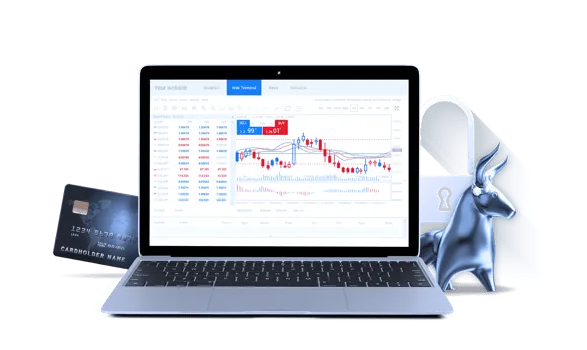Cfd trading is a lucrative and exciting way to trade on the financial markets. CFDs or contracts for difference, allow traders to speculate on the price movements of various underlying assets like stocks, indices, commodities, and currencies, without owning the actual assets. Traders can go long (buy) or short (sell) on CFD contracts, and profit from the difference between the opening and closing prices. Since CFDs are highly leveraged products, they offer the potential for high returns, but also carry a high degree of risk. In this blog, we will explore the world of cfd trading, examine its profit potential, and highlight some of the key factors that traders need to consider before entering the market.
Cfd trading Basics: To trade CFDs, you need to open an account with a broker that offers CFDs and deposit capital. You then select the underlying asset that you want to trade and specify the contract size, leverage, and stop loss and take profit levels. If you think the asset price will go up, you buy (go long) on the CFD contract, and if you think the price will go down, you sell (go short). If the price moves in the direction you anticipated, you will earn a profit, minus the spread and financing charges. If the price moves against you, you will incur a loss, which can exceed your initial deposit. CFDs allow traders to access a wide range of markets, with lower capital requirements than traditional trading.
Profit Potential: The main attraction of Cfd trading is its profit potential. Because of the high leverage involved, traders can amplify their gains and multiply their capital quickly. For example, if you deposit $1,000 and use 1:30 leverage, you can control $30,000 worth of assets. If the price moves in your favor by 1%, you will make a profit of $300, which is a 30% return on your initial investment. However, this also means that if the price moves against you by 1%, you will lose $300, which is a 30% loss of your initial investment. It’s essential to have a sound risk management strategy in place and avoid trading with funds you cannot afford to lose.
Factors to Consider: While the profit potential of Cfd trading is high, there are also significant risks involved. Some of the factors that traders need to consider before entering the market include market volatility, leverage, regulatory risks, and the financial stability of the broker. Market volatility can lead to rapid price movements, which can work in your favor or against you. High leverage can magnify your gains, but also your losses, and traders need to use it judiciously. Regulatory risks vary from country to country, and traders need to ensure that their broker is regulated and transparent. Finally, traders need to consider the financial stability of the broker, as the broker’s solvency can impact your deposits and trading positions.
Trading Strategies: To succeed in Cfd trading, traders need to adopt a sound trading strategy that accounts for market conditions, risk management, and profitability. Some of the popular trading strategies include trend following, range trading, fundamental analysis, and technical analysis. Trend following strategies involve buying or selling assets based on the direction of the trend, while range trading seeks to profit from the oscillations between support and resistance levels. Fundamental analysis focuses on economic and market data to make trading decisions, while technical analysis uses chart patterns and tools to identify trading opportunities. Traders need to backtest their strategies and refine them based on real-time results.
short: Cfd trading offers a lucrative and exciting way to trade on the financial markets, with the potential for high returns. However, it also carries significant risks, which require careful consideration and risk management. By understanding the basics of Cfd trading, assessing the profit potential, and evaluating the factors that impact the market, traders can develop a successful trading strategy and achieve their financial goals. As with any form of trading, success in Cfd trading requires discipline, patience, and a willingness to learn and adapt. Happy trading!
In short, while Cfd trading offers traders a unique opportunity to profit from market movements, it is crucial to note that it comes with significant risks. It requires traders to have a sound risk management strategy in place, understand the basics of Cfd trading, and have a deep knowledge of the markets they are trading. Understanding the benefits and risks of Cfd trading, having realistic expectations, and adopting sound trading strategies can help traders realize their profit potential and gain a competitive edge in the market. As with all forms of trading, discipline, patience, persistence, and continuous learning are essential to succeed.



